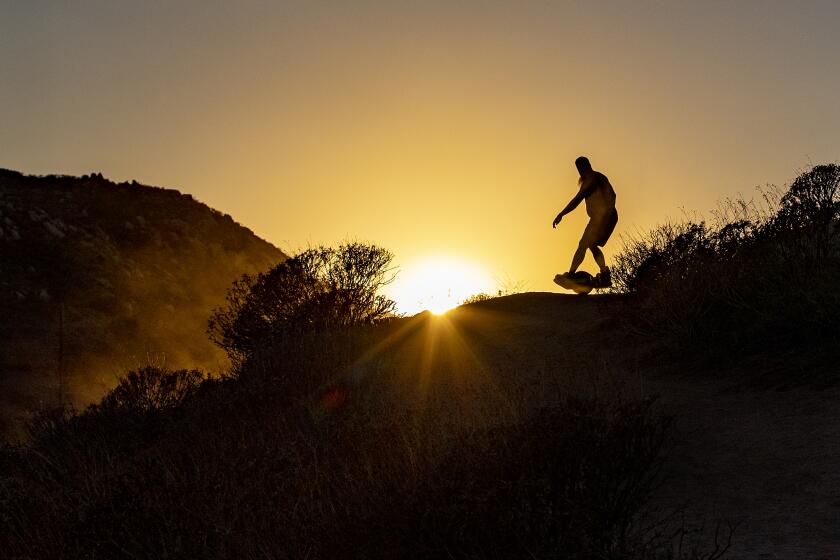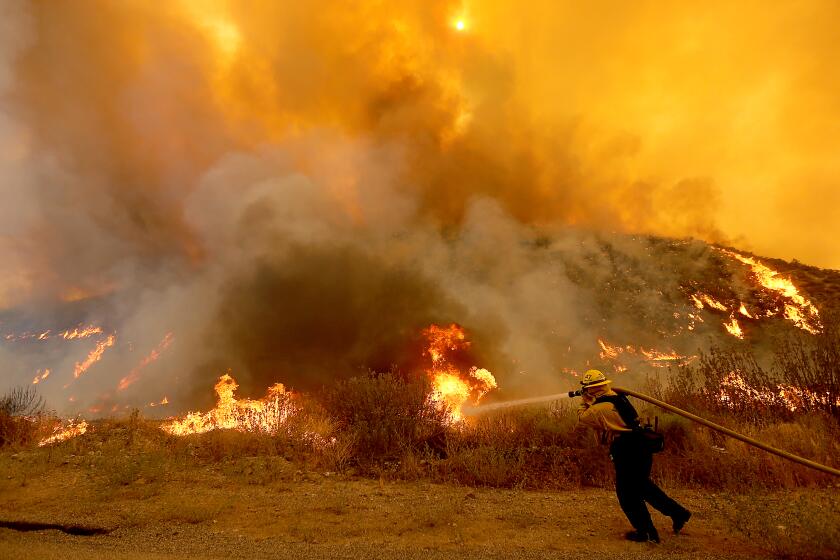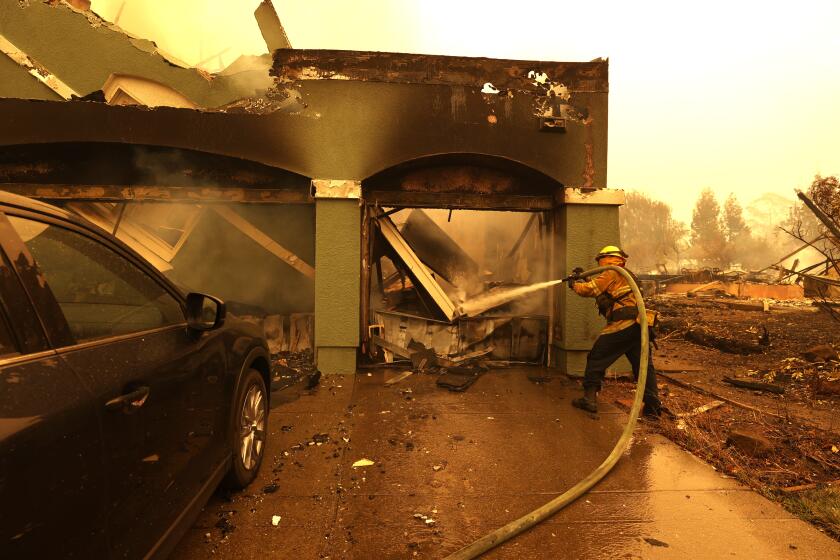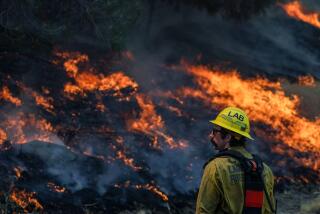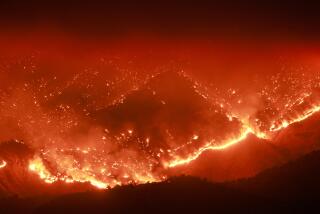What wet winter? California prepares for peak wildfire season
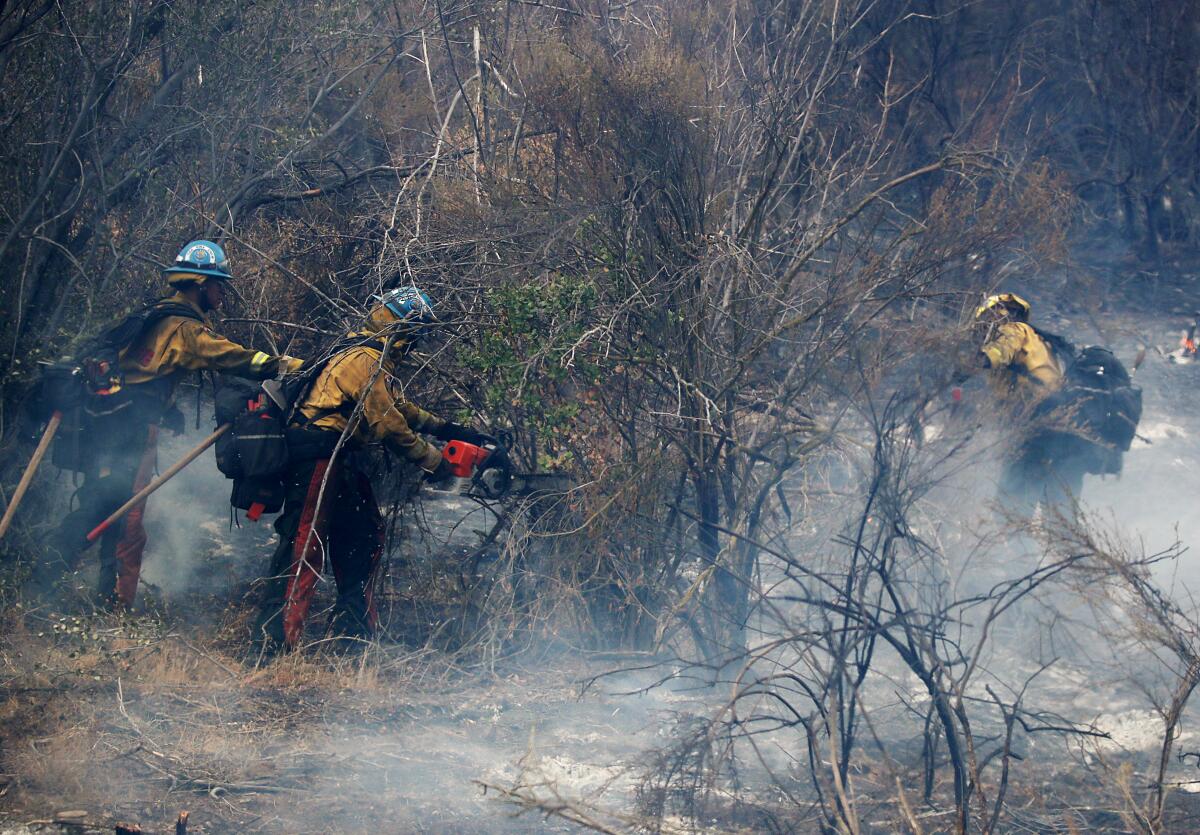
- Share via
As California faces its first major heat wave of the summer this Fourth of July weekend, state officials are urging residents to not become complacent about the threat of wildfires this year.
Standing beneath the blistering sun at the Grass Valley Air Attack Base in Nevada County, California Department of Forestry and Fire Protection chief Joe Tyler outlined the state’s plans to battle blazes this year with new tools and technology, as well as increased vegetation management efforts.
He cautioned that while the wet start to 2023 may have delayed the start of fire season, it has not deterred it.
“The abundant rain has produced tall grass and other vegetation that’s dried out already and is ready to burn,” Tyler said. Additionally, portions of the state are expected to soar into the triple digits this weekend, including up to 110 degrees in the Sacramento Valley.
‘Any spark from fireworks could easily start a fire in the tall grass crop that has cured and turned brown in recent weeks,’ the weather service says.
Tyler likened this year’s conditions to 2017, which started similarly wet but later saw dry vegetation and strong wind events that spurred major fires. More than 1.5 million acres burned that year, he said, killing 47 people and destroying 11,000 structures.
This year, there have already been a number of small wildfires, including a fire in Riverside County on Tuesday that grew to 55 acres and burned at least two structures.
The week prior, Cal Fire responded to more than 300 blazes statewide, Tyler said. The agency is currently fully staffed with fire engines, bulldozers and aircraft ready to respond at the first sign of sparks.
“As the Fourth of July is quickly approaching us, I’m asking each of you to be mindful of how quickly a fire can have devastating consequences,” Tyler said.
He was joined by Gov. Gavin Newsom, who acknowledged that vegetation management plays a key role in reducing the state’s wildfires, which are getting hotter, faster and more frequent. But Newsom also said climate change — including worsening whiplash between extreme weather conditions — has accelerated the need for advanced firefighting response.
“In the last four years, we had two of the most extreme wildfires seasons — some of the most destructive in terms of acreage and property and lives lost — and then two of the more modest fire seasons,” Newsom said. “And so we live in this new reality where we can’t necessarily attach ourselves to some of the more predictive models of the past because of the nature of a world that’s getting a lot hotter, a lot drier, and a lot more uncertain as it relates to the issue of climate change.”
Between 1996 and 2020, wildfire burn areas in California grew five times larger than in the 25 years prior. Scientists say climate change is to blame.
Indeed, recent research found that California wildfires consumed five times more area between 1996 and 2021 than in the 25 years prior, an increase chiefly attributed to climate change. Thirteen of the state’s 20 largest fires on record have burned in the last decade, according to Cal Fire.
Newsom and other officials outlined a war-like strategy for responding to the worsening threat.
Among the state’s latest tools is the Fire Integrated Real Time Intelligence System, or FIRIS, which includes advanced aircraft than can deliver real-time updates on fire behavior to crews on the ground.
For the second year in a row, the state will also deploy “Fire Hawks,” or modified Black Hawk helicopters that can fight fires at night. At least three Fire Hawks will be staffed 24 hours a day.
“It has been a game-changer,” said Benjamin Berman, chief pilot of Cal Fire’s helicopter program. The Fire Hawks “can seamlessly transition from fire suppression to hoist-air rescue to vegetation management without any further configuration.”
What’s more, the state’s firefighting portfolio now has about 1,000 mountaintop cameras that can provide real-time, 360-degree monitoring of the state’s forestlands; pinpoint firestarts using artificial intelligence; and help organize resources for early suppression, Newsom said. Just a few years ago, such monitoring had to be conducted by people in towers.
The state is also working with the Biden administration, the Environmental Defense Fund and Lockheed Martin to streamline its use of existing defense technologies and satellites to provide constant monitoring and data collection. Similar tools have allowed the state to create 3-D model maps of 30 million acres of California.
“I don’t think that point is made enough of how we are modernizing our approach and how we’re meeting, dare I say, the moment,” Newsom said, “addressing the nature of the change, and the extremes that we’re now challenged with in this state.”
Many of the state’s most advanced firefighting efforts have been funded through federal and state investments, including $2.7 billion from the Legislature, he said.
California’s biggest seller of homeowners insurance says regulations and wildfires make new policies a financial loser. But there are reasons to question that explanation.
But while significant preparations are underway, the reality of California’s worsening fires is already playing out for many Californians.
Earlier this year, insurance giants State Farm and Allstate both announced that they would stop writing new policies in the state, citing worsening wildfires and other catastrophes.
Newsom said he is working with the insurance commissioner to address the market in the state, and hoped that new liability insurance grants would help accelerate vegetation management projects to reduce the risk of fire.
The grants will provide protections for practitioners of controlled burns, or intentional fires used to eliminate dry vegetation and other fuels. (California has set a goal of 400,000 acres of controlled burns per year by 2025).
However, the governor noted that only about 3% of wild lands in California are owned by the state, with the majority belonging to private owners and the federal government. He and other officials asked that residents do their part by creating a minimum of 100 feet of defensible space clearance around their homes and structures to help prevent a blaze from catching.
“Yes, we have the best mutual aid system in the world, but it’s also about mutual responsibility, and the state cannot do all of that alone,” he said.
